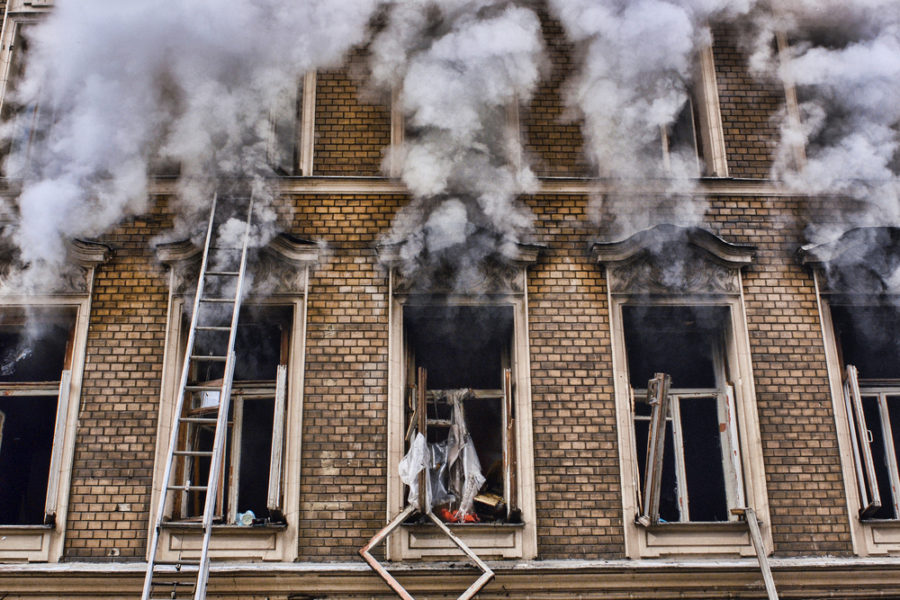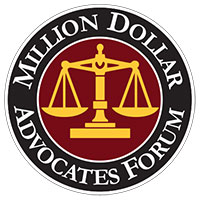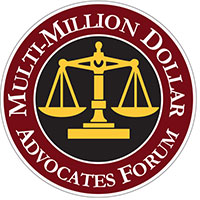A building fire can be devastating, to both people and property. The building itself may be irreparably damaged or completely destroyed. People inside the building at the time of the fire may suffer a wide range of injuries, including serious burns and smoke inhalation. If the building is a residential structure, such as an apartment or condominium building, residents may experience significant property losses, as well as the loss of pets that may have been present in the building.
In the aftermath of such a traumatic and destructive event, injured parties will naturally question who was responsible for the fire and the ensuing damages. The answer to that question may not immediately be clear, and it may take an investigation and expert analysis to identify the responsible party or parties.
Liability for Building Fire Injuries and Deaths in California
While determining liability requires a very specific analysis, there are a number of possible responsible parties to be investigated. Some of the most common possibilities include:
The Responsibility of Property Owner or Manager in California
Faulty maintenance and other negligence on the part of a building owner or manager may cause or contribute to fire-related injuries. For example:
• Faulty wiring that has not been replaced or updated may be the cause of a fire
• Failing to provide adequate fire safety measures, such as sprinklers, alarms, and fire extinguishers, can increase the seriousness of the blaze and the amount of harm done
• Failing to maintain and clearly mark escape routes and fire exits may result in unnecessary injury and death
When the building owner or manager fails to maintain the premises in safe condition, to comply with the fire code and other safety statutes and ordinances, or to provide critical safety equipment, either or both may be responsible for injuries sustained in a fire, or for deaths resulting from the fire. The owner and manager may be liable even if another party is responsible for starting the fire. For example, if a tenant negligently started the fire, but negligent management or maintenance helped the fire to spread or made it more difficult to escape the building, the tenant and owner/manager may share liability.
Liability for the Fire Starter in Los Angeles
If the fire started because a tenant left candles burning unattended, he or she could be held liable for any damages caused by the fire, including injury or death. If a repairman negligently triggered an electrical fire, his company could be held responsible for the resulting harm.
Depending on the circumstances, the person who actually started the fire may not be in a position to pay for damages associated with the blaze. For example, the tenant whose candles start a fire that burns through several apartments is very unlikely to have the resources to pay for the damage to the building and other tenants property, let alone to pay medical expenses or compensation for wrongful death. It is also unlikely that she will carry insurance that would cover this type of liability, or that any insurance she did carry would be sufficient to address the damages associated with a serious fire. A company, on the other hand, likely carries insurance that would cover at least part of the damages resulting from the fire.
In this situation, it is generally in the best interests of anyone who was injured or who lost a loved one in the fire to work with an experienced personal injury attorney to assess and identify all possible responsible parties. Often, multiple parties share responsibility for the fire and the ensuing damages, and some of those parties may be in a better position to provide compensation than others.
Liability for Architects and Engineers Who Designed the Building
The design of a building and the materials chosen can have a significant impact on the building’s susceptibility to fire, the effectiveness of fire suppression systems, and the ease or difficulty of escaping the building during a fire or other disaster. Often, designers are faced with competing interests when designing a building. For example, some green building materials and features such as rooftop gardens can facilitate the spread of fire and make it more difficult for firefighters to gain control of the blaze.
When a design flaw or negligently-selected materials contribute to the flammability of the building or the spread of the fire, those responsible for the design may be wholly or partly liable for damages caused by a building fire, including injuries and fatalities.
Liability for Contractors and Material Suppliers
A design flaw can increase the risk of fire, the speed with which a fire will spread, and the difficulty of putting out a fire. But, even a good design can result in a dangerous building if the general contractor, subcontractors, or materials suppliers don’t exercise due care.
A construction company or materials supplier may contribute to damages associated with a fire in many ways. Some examples include:
• Negligent practices by a subcontractor, which result in loose or poorly-insulated wiring, a heat source too close to insulation or other flammable material, or other hazardous conditions.
• Negligent supervision and inspection by a general contractor, such that the company responsible for the project overlooks faulty work done by a subcontractor.
• Provision of defective materials, or substitution of materials not consistent with the specifications for the project.
In some cases, defective materials may be introduced in error—for example, a faulty batch of insulation may not be as flame-retardant as would be required for safe construction of the building, but the manufacturer and supplier may be unaware of the defect. In other cases, inferior materials are introduced by unscrupulous material suppliers or contractors as a means of saving money and increasing profits on a job.
Depending on how the materials got into the building and whether they were actually defective or simply not in accordance with the building specifications, liability may be based in negligence, product liability, or another legal theory.
Contact a California Fire Lawyer for Your Injuries
If you have been injured or a family member has been killed in a building fire, you should speak with a Los Angeles personal injury attorney who is experienced in handling this type of case as soon as possible after the fire. You may be entitled to damages through a personal injury or wrongful death suit. Some common types of damages include:
• Reimbursement for medical expenses
• Compensation for property damage
• Lost wages and projects lost earnings
• Compensation for pain and suffering
Injuries sustained in a fire often require significant medical treatment, meaning that the victim of a building fire may need compensation from the responsible party in order to obtain the best medical care in a timely manner.
In addition, determining the cause of a fire and any factors that may have increased damages requires a careful analysis of evidence by experts. The longer you wait to consult an attorney, the more likely it is that critical evidence will have been altered or destroyed, making it more difficult for your attorney to establish liability and pursue the full damages to which you are entitled.










